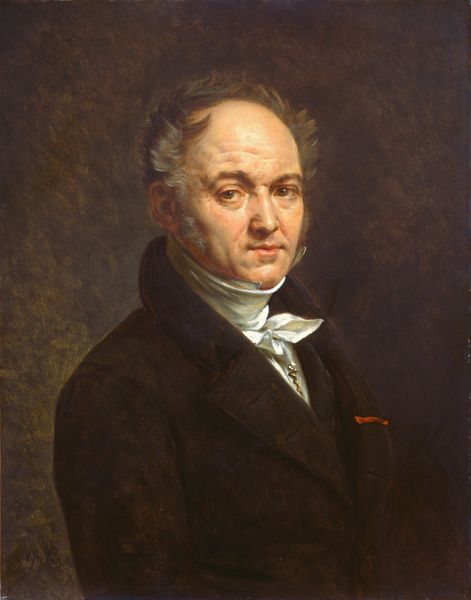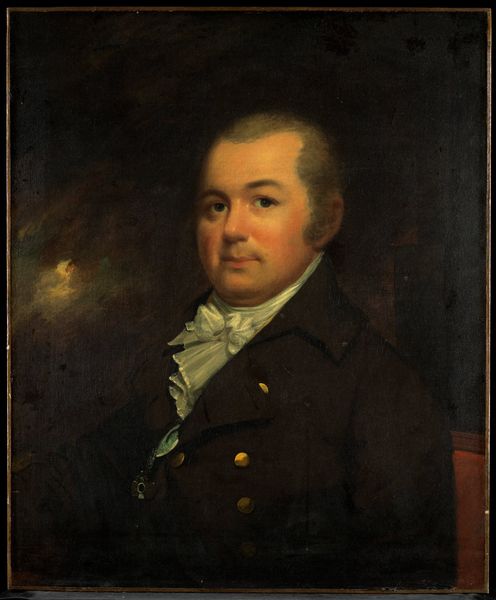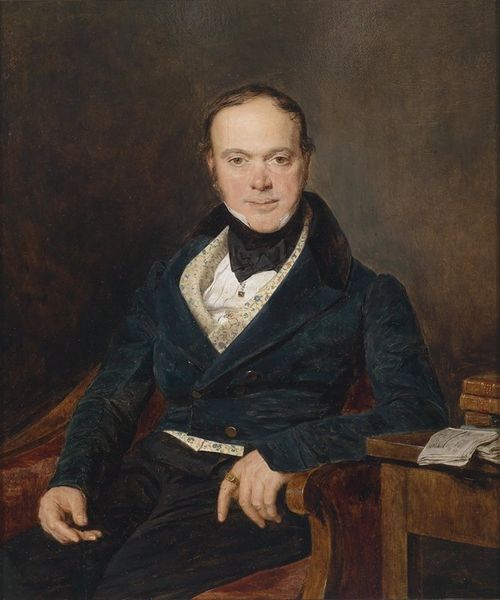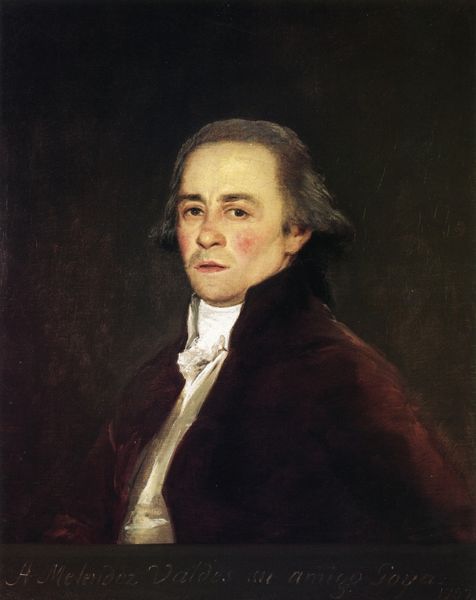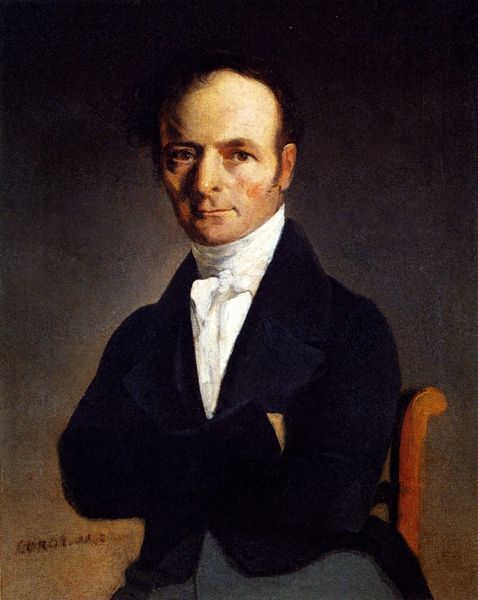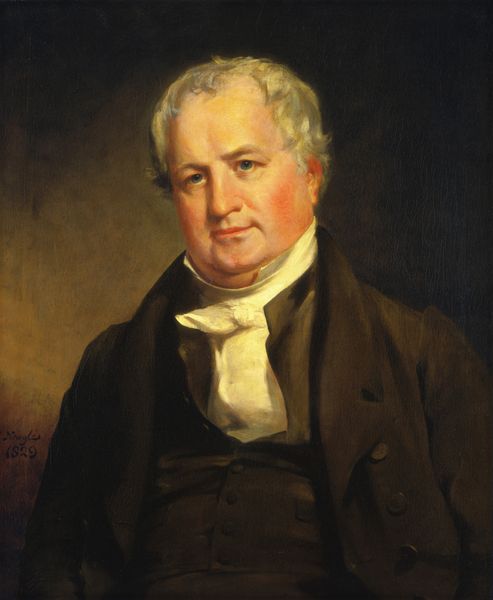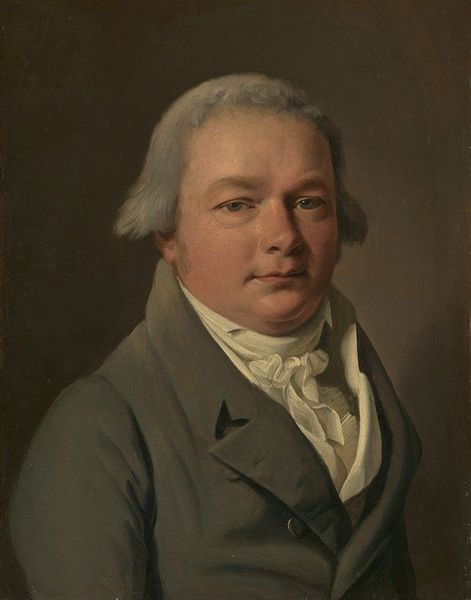
painting, oil-paint
#
portrait
#
portrait image
#
portrait
#
painting
#
oil-paint
#
portrait subject
#
portrait reference
#
portrait head and shoulder
#
romanticism
#
facial portrait
#
portrait art
#
fine art portrait
#
realism
#
celebrity portrait
#
digital portrait
Dimensions: overall: 76.2 x 63.5 cm (30 x 25 in.) framed: 85.7 x 98.4 x 7.3 cm (33 3/4 x 38 3/4 x 2 7/8 in.)
Copyright: National Gallery of Art: CC0 1.0
Curator: Here we have Jacob Eichholtz's portrait of William Clark Frazer, created around 1830 using oil paints. The work represents Frazer in a traditional, formal pose, capturing his likeness with a focus on detail and character. Editor: Immediately striking. I feel a sense of… controlled power. His direct gaze, the way the light catches his face. There’s something assertive, yet restrained in his expression. It feels very representative of the period. Curator: It is indeed. Eichholtz was a prominent portrait painter, especially known within Pennsylvania. He often captured leading figures of his time, thus shaping a visual record of local society and politics. Editor: You can see the markers of class in the attire – the high collar, the finely rendered fabric of his coat. The slight flush in his cheeks adds warmth but it is all so consciously posed. Who was Frazer himself? Understanding the sitter's identity shapes our interpretation of the portrait, don’t you think? Curator: Absolutely. William Clark Frazer was a lawyer and judge; important members of the burgeoning legal system. These portraits were very often commissioned or served as symbols of status. Eichholtz would likely have had several sittings with his subject, building a rapport that may be seen in the rendering. Editor: And that commission reveals much about the patronage system of the day, where individuals from specific social echelons were elevated and celebrated through art. Did Eicholtz take steps to democratize art making beyond the one percent, as it were? Curator: Eicholtz navigated the artistic landscape of his time, accepting commissions from the elite while also attempting to capture likenesses for broader audiences. He utilized techniques accessible to various societal groups in response to his patrons. Editor: The subtle nuances—the almost severe expression softened only by that delicate ruffling at the neck—hint at a life lived in public service but also within a tightly controlled social structure. What this says about that particular time through this singular depiction of the sitter's face is what matters most. Curator: Viewing art like this reveals not just a likeness, but insights into society's values. Editor: I agree, engaging with the portrait opens up considerations about the power structures inherent within even the simplest act of image making.
Comments
No comments
Be the first to comment and join the conversation on the ultimate creative platform.


